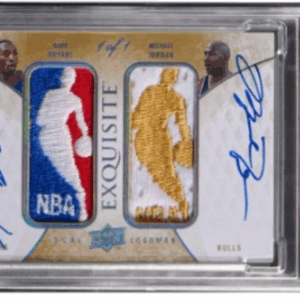Picture this: the unmistakable sound of a bat cracking as the baseball takes flight, soaring over the fences and landing somewhere in the realm of legends. This is the new reality for the sport of baseball, where a simple shift in equipment dynamics is transforming games—and, interestingly enough, shaking up the world of baseball card collecting. Welcome to the era of the “torpedo” bat, a cunning piece of sports innovation that has captured the imagination of sluggers, fans, and collectors alike.
The so-called torpedo bat, with a shape as distinctive as its name, represents a fascinating leap forward in custom sports equipment. Each bat is tailored with surgical precision to reflect the individual quirks and preferences of its player, turning each swing into a potentially record-setting moment. This isn’t just about better hits; it’s about science, strategy, and star-making in one sleek swoop of metal or wood.
But why torpedo? Well, imagine a submarine in motion: narrow, powerful, and built for impact. These bats channel that energy, allowing hitters to crush pitches in ways that defy traditional logic (and robust pitching careers). When the Yankees began their season by launching 15 home runs against the Milwaukee Brewers—nine in one spectacular game—it became clear that the baseball landscape was undergoing a seismic shift.
For the collectors out there, the emergence of torpedo bats comes with a whole new set of rules and expectations. Hitting is hot, and pitchers are left sweating. Yankees star Aaron Judge, a powerhouse when it comes to the long ball, has seen his card value skyrocket. Interestingly, Judge has yet to adopt the torpedo technology himself, proving that a rising tide truly lifts all boats—or in this case, all bats.
Throughout this sea change in the sport, pitchers have found themselves nervously eyeing a market that suddenly feels a lot less like theirs. Some of the young, once-celebrated arms like Paul Skenes, last season’s NL Rookie of the Year, are now part of a narrative where they fight to retain value against an onslaught of sluggers with souped-up equipment. Young prospects like Jackson Jobe from the Detroit Tigers and Roki Sasaki from the Dodgers face uncertain collectible prospects too, as their investments in pitching prowess risk being overshadowed.
Enter Shohei Ohtani, the unicorn of baseball. A dual-threat naturally gifted in both pitching and hitting, Ohtani finds himself in a special category. If torpedo bats dictate that this season becomes home-run heavy, the infallible Ohtani might choose to wield his offensive power more than ever. Collectors and fans alike salivate at the potential of a season where this baseball marvel prioritizes the art of the homer—giving a whole new meaning to the phrase “the best of both worlds.”
As collectors adjust their strategies, it’s time to place bigger bets on the players likely to light up the highlight reels this season. Fans should anticipate this era of dynamic hitting, even as pitchers dust off résumés in the face of plummeting ERA’s and soaring slugging percentages.
This new reality poses a fascinating juxtaposition: baseball’s dual love for athleticism and numbers takes center stage, where exquisitely engineered bats extend the mathematical possibilities. While the allure of a well-pitched game remains—particularly when a virtuoso like Ohtani takes the mound—there’s a palpable shift toward the thrill of the derby-style match-up.
Pitchers may find solace through adaptation, finding ways to tame these torpedoes with innovation in their own crafts. Those who can parlay finesse and the art of the mind game will stand resilient, potentially transforming into new-age cult heroes for maintaining viability against the backdrop of this hit-heavy season.
Meanwhile, collectors seize the entry to pivot toward hitters, turning their eyes to what could soon become valuable memorabilia, reshaping a space where home runs equal hard currency. Baseball, in its essence, is a sport that thrives on evolution, and with torpedo bats, it’s a brilliance on display—a sport and its byproducts allowed to evolve spectacularly.
So as pitchers work on their psychological warfare and sweet swings become commonplace, we stand warmed by the kaleidoscope of memories and fresh excitement. Baseball cards, once mere pieces of cardboard, now vibrate with potential—miniature keepsakes of a moment when sport dared to accelerate into its next great era. Play ball.






